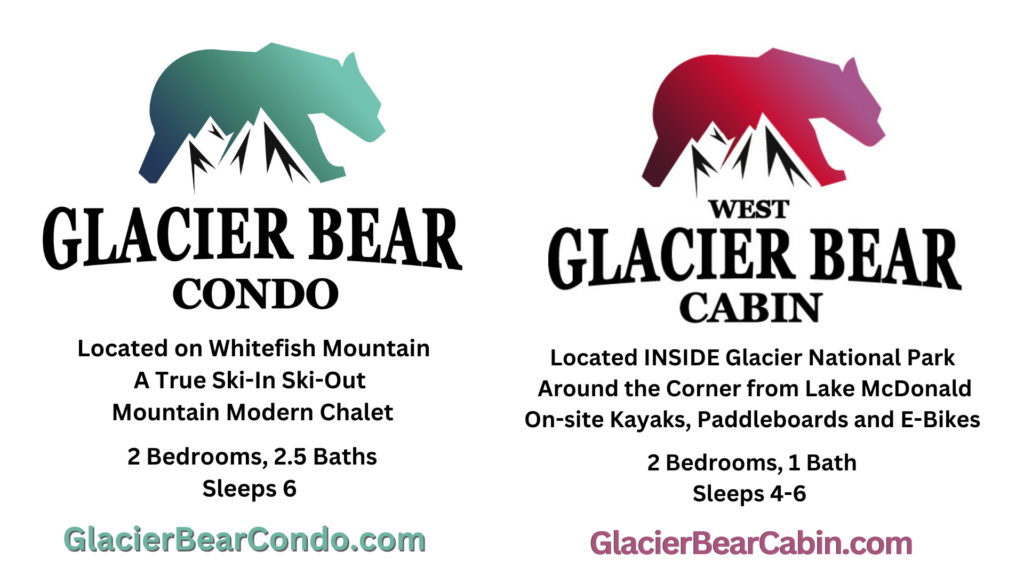– Preserving the Natural Splendor –
Glacier National Park, located in the westernmost part of Montana, USA, is an awe-inspiring expanse of pristine wilderness. Spanning over a million acres, this national treasure boasts snow-capped mountains, glittering lakes, and abundant wildlife. And, as visitors, it is our duty to preserve the park’s delicate ecosystems and ensure its beauty is sustained for generations to come. In this blog, we will delve into the principles of Leave No Trace (LNT) and explore how they can be embraced when exploring Glacier National Park.
1. Plan and Prepare:
Before embarking on any adventure in Glacier National Park, it is crucial to plan and prepare thoroughly. Of course, you’ll want to research the park’s regulations, trail maps, and weather conditions to ensure a safe and enjoyable experience. By doing so, you minimize potential risks and ensure you are equipped with the necessary skills and knowledge to leave no trace.
2. Stay on Designated Trails:
Glacier National Park offers a myriad of trails, allowing visitors to venture into its breathtaking landscapes. However, it’s crucial to stick to designated trails to minimize damage to fragile vegetation and wildlife habitats. What is more, straying off the beaten path can lead to soil erosion, ruined vegetation, and disrupt important ecosystems. And, always follow posted signs, stay on marked trails, and avoid creating shortcuts.
 3. Pack Out What You Pack In:
3. Pack Out What You Pack In:
Of course, one of the most important principles of Leave No Trace is to make sure that anything you bring into the park leaves with you. Further, always carry a trash bag and pack out all your litter, including food wrappers, bottles, and any other waste. Even biodegradable items, like apple cores and orange peels, should be packed out. Obviously, they can take longer to decompose in the park’s alpine environments.
4. Respect Wildlife:
Glacier National Park is home to a diverse range of wildlife, including grizzly bears, moose,
mountain goats, and countless other species. And, respecting their natural habitats is essential to their survival. Moreover, please keep a safe distance from wildlife. Or, use binoculars or telephoto lenses for closer views. In addition, you’ll never want to feed or approach wildlife! Human interference can disrupt their natural behaviors and put both animals and visitors at risk.
5. Camp Responsibly:
Camping in Glacier National Park provides an unforgettable experience. This can immerse you in the heart of nature. And, when setting up camp, choose sites that will limit your impact on the environment. Keep your camp site clean and dispose of waste properly. Use fire rings or marked cooking areas. Or, you could consider using a camp stove instead of camp fires. Sometimes, firewood is scarce and crucial for other ecological processes.
6. Leave Natural and Cultural Artifacts:
As tempting as it may be to take home a rock or relic as a souvenir, it is vital to leave natural and cultural artifacts where they belong. Taking such objects disturbs the delicate balance of nature. And, it robs future visitors of the same experience. Please, simply admire and photograph these treasures, but leave them for others to enjoy.
Glacier National Park is a true wonder of nature, and it is our responsibility to protect its beauty. Obviously, when you practice these Leave No Trace principles, we can ensure that future generations can enjoy and appreciate the park’s magnificence. Remember, plan and prepare, stick to posted trails, pack out what you pack in. Additionally, please respect wildlife, camp smart, and leave natural and cultural artifacts untouched. Let us all strive to be responsible hikers. And, please Leave No Trace in Glacier National Park.


